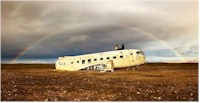|
CAE, Jazz Aviation and Seneca have teamed up to develop Jazz Approach, an innovative Canadian program to provide Jazz with a pipeline of top-quality first officers.
The parties involved have signed a five-year partnership agreement and the first is set to begin training in April 2020. (Source: www.cae.com/news-events) |
|
Pilots and flight attendants of an Air Canada Rouge Boeing 767-300ER decided not to take any chances when a mysterious odour permeated the cabin as the twin engine jet climbed out of Vancouver. Unexplained odours can be a symptom of electrical malfunctions or problems with the air-conditioning system, and the crew of the aircraft — which was carrying 245 passengers to Montreal — requested to level off at 25,000ft in order to troubleshoot the problem. In a bulletin on the September 17, 2019 incident, the Transportation Safety Board of Canada says the crew had "no success" with efforts to clear the smell and, as a precaution, the pilots put on oxygen masks, transmitted an urgency call, and returned to Vancouver to land. Inspectors soon traced the source of the problem. Not a technical snag but rather a shipment of durian fruit in the aircraft's forward cargo compartment, which was hastily offloaded. Given that US travel and food writer Richard Sterling has described the durian as exuding a long-range aroma akin to "turpentine and onions, garnished with a gym sock" — and that's just the family-friendly bit of the quote — it's not hard to understand why the Asian fruit caused so much consternation on the flight. There's a reason the durian is banned on public transport in several Asian cities. Don't expect it to turn up on Air Canada’s in-flight menus any time soon. (Source: Flight International Magazine October 22, 2019) |
|
American Douglas Super DC - 3 –
This piece of hull is all that remains of one of the world's best known plane wrecks. The plane itself was not Icelandic but American, a Douglas Super DC-3 that crashed in 1973. Thankfully, the crew survived the impact, but nobody thought to clean up the aftermath! As far as desolate surroundings go, it would be hard to find something more bleakly beautiful than this. Click the image to view a video on YouTube. |



